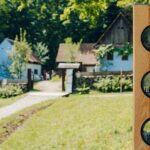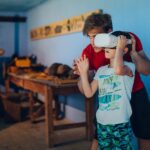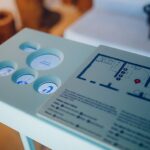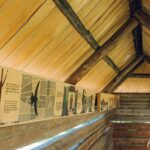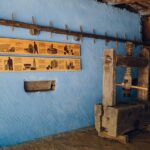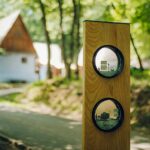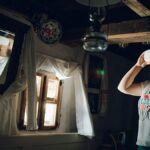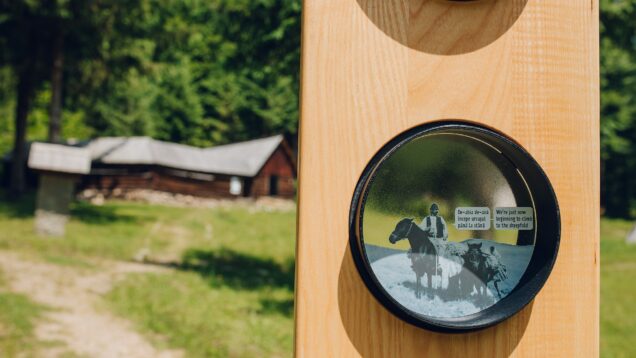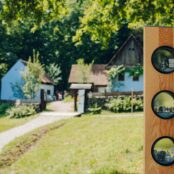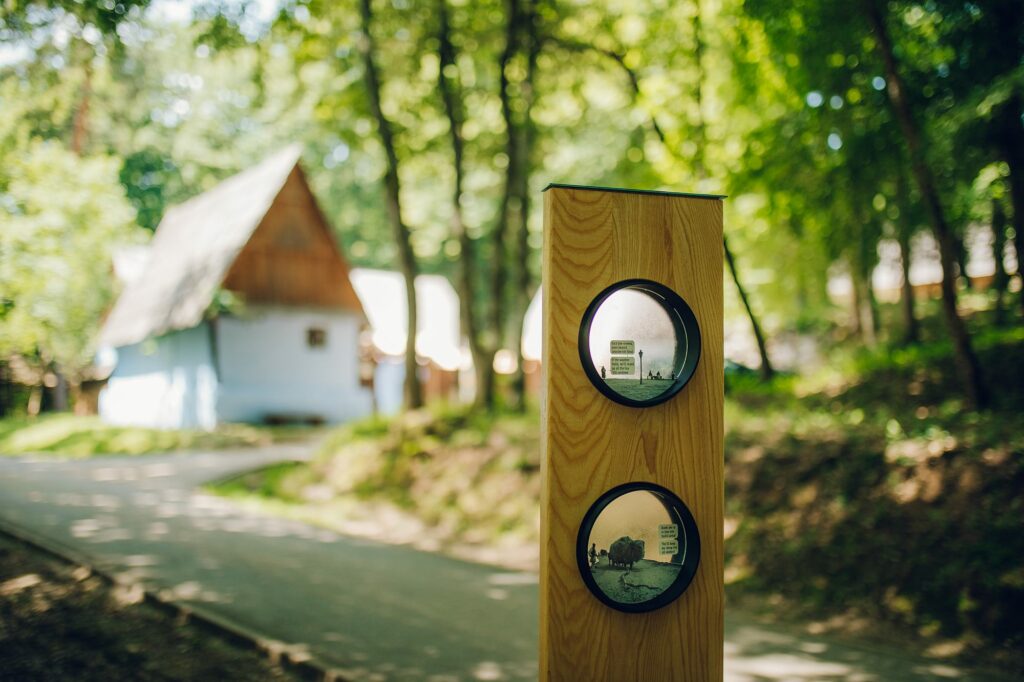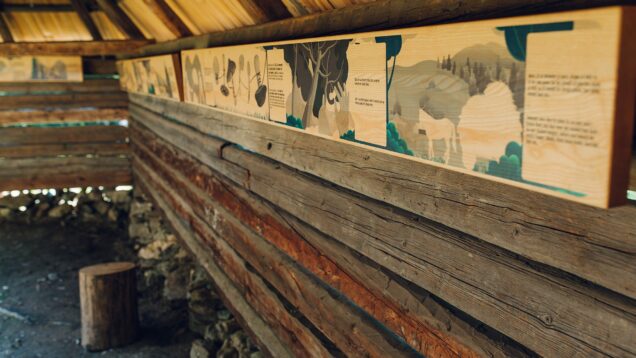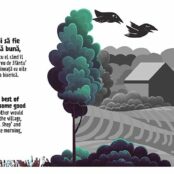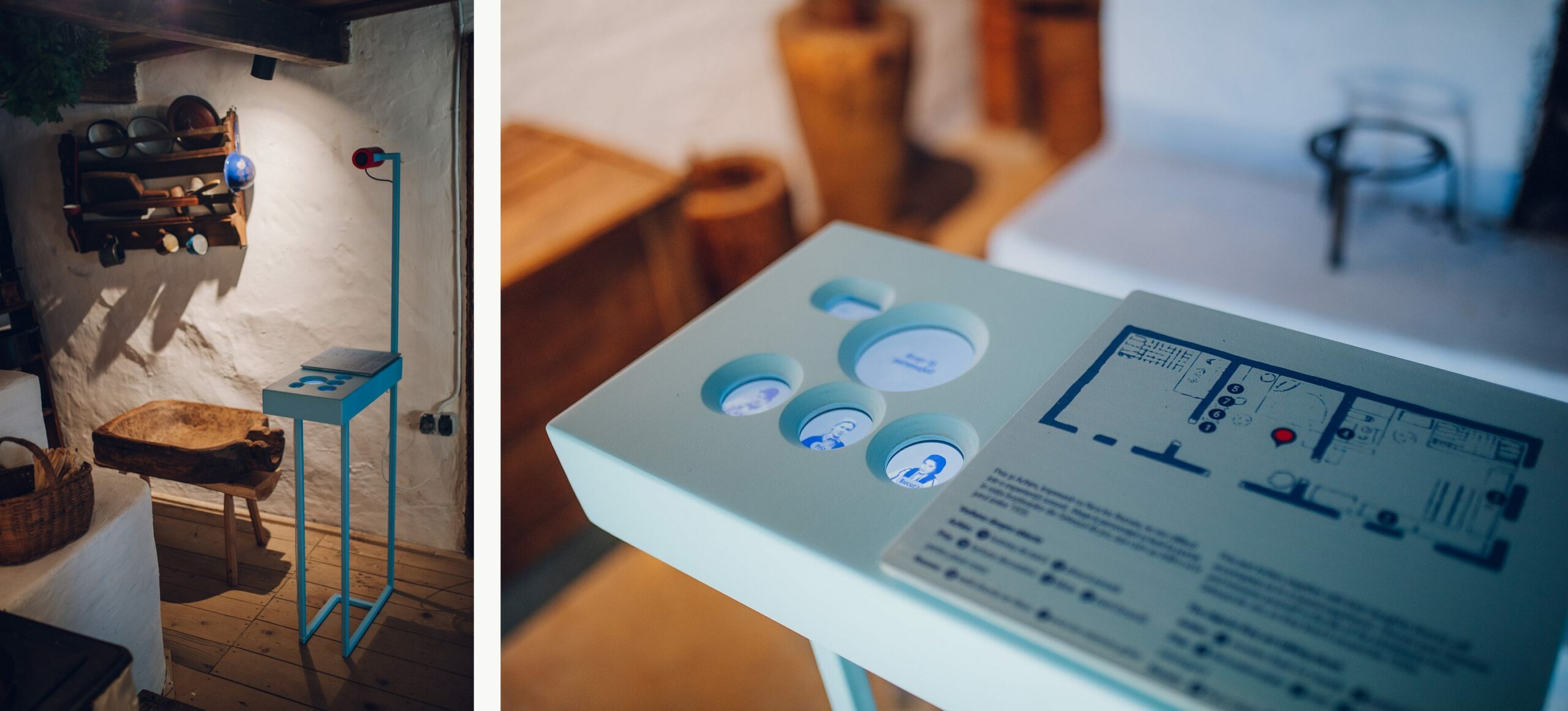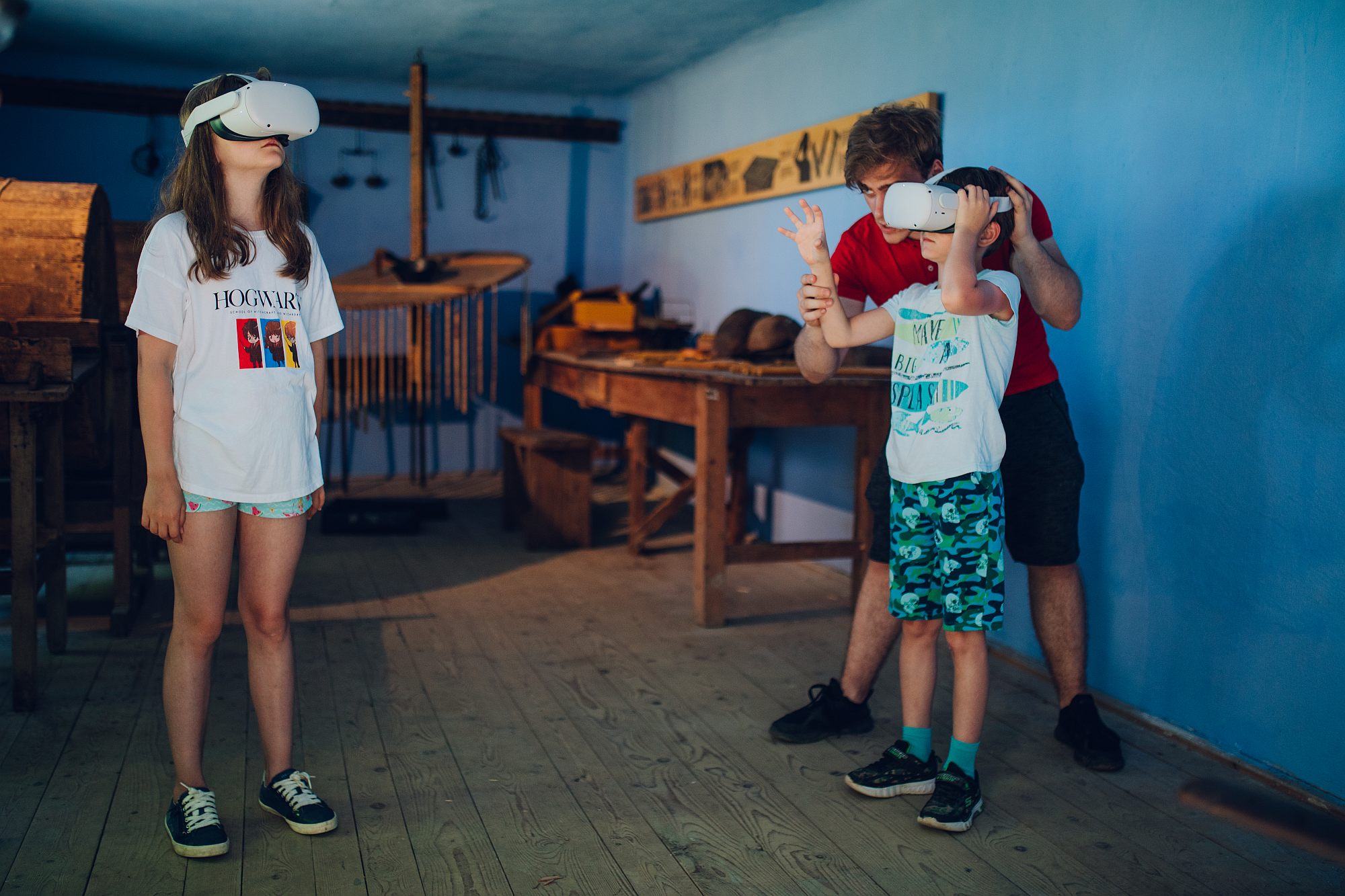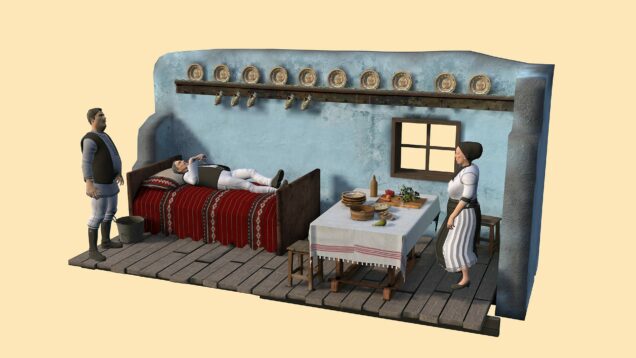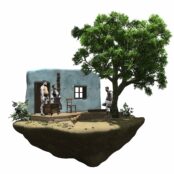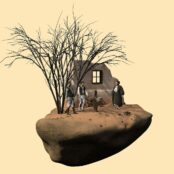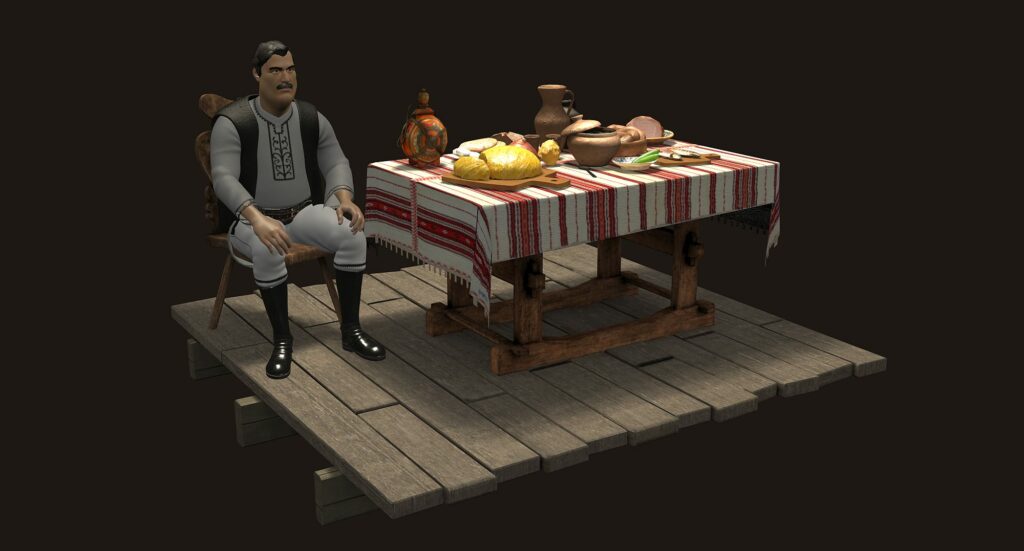ASTRA VR is a museum project which uses VR technology, sound installations, and cartoons to make traditional culture heritage much more accessible. ASTRA Museum of Traditional Folk Civilization undertook to innovate its means of expression and to come closer to a new generation of visitors.
Text: Constantin Goagea
Foto: Silviu Popa
All these contemporary means were thrown in to evoke early 20th-century village life around Sibiu. Close to 1920, here we find a whole world of entrepreneurship, centred around shepherding, and also the world of the first crises triggered by cloth imports or by the development of the chemical industry, in short, an incipient globalization crisis. In this context, there is a shift in the importance of sheep cheese, wool and tallow in the economic chain, which will influence many other elements in the rural development.
*ASTRA VR-specific signage: beech wood planks with a light blue stripe, the colour deriving from the wall paint in Rășinari.
The portholes are populated with printouts of people from photos taken in the respective areas (Sebeș or Rășinari). The transparent printouts of people overlay the household images, suggesting living scenes that happened here.
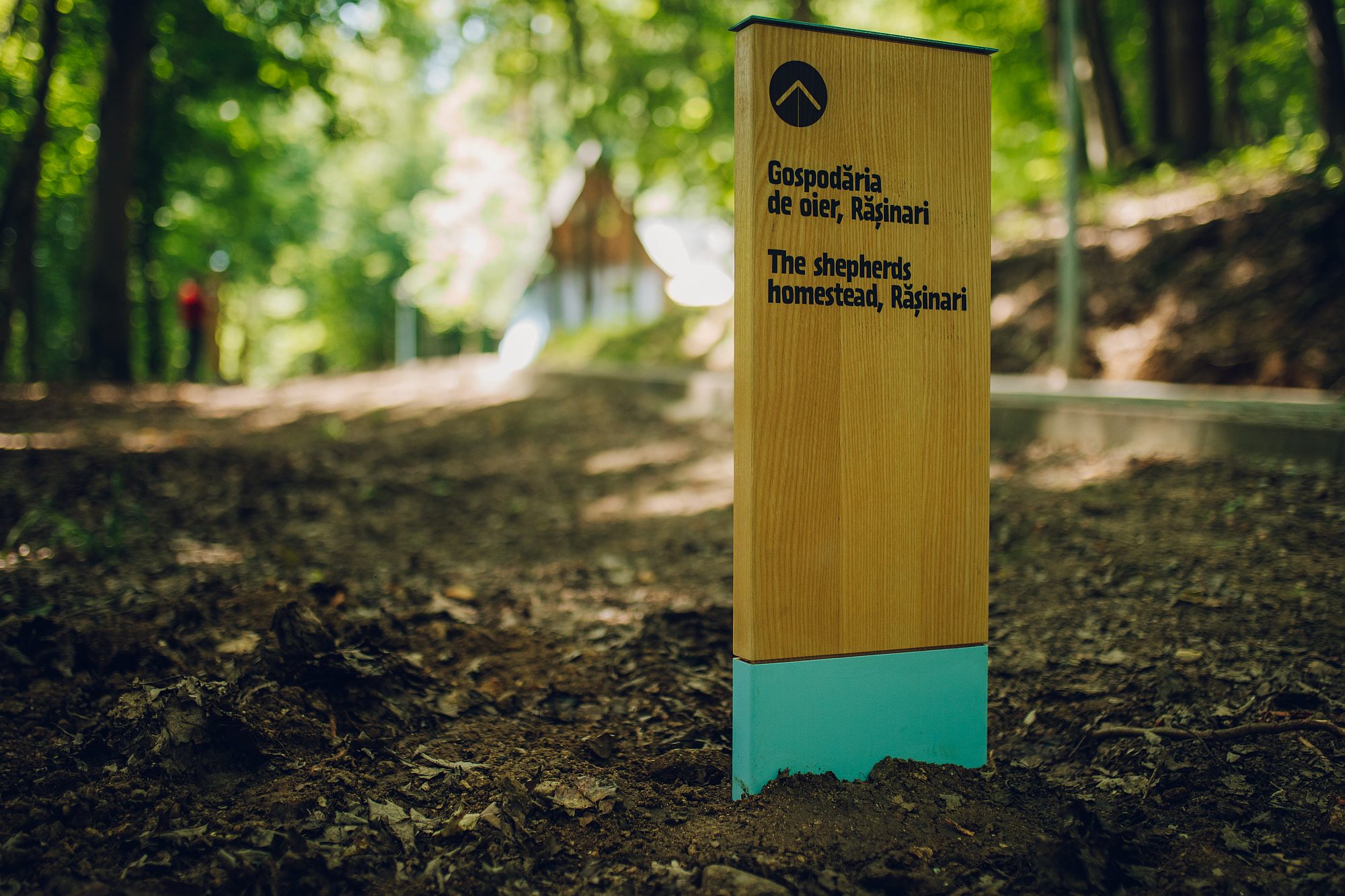 *A signage system makes the VR ASTRA track to be easy to spot by visitors
*A signage system makes the VR ASTRA track to be easy to spot by visitors
This experimental project frames the case study of two households and a shed.
7 old housewares/installations were selected for each of the two households (of Sebeș and Rășinari) – especially objects related to food-making, ones no longer used today. The use of these objects would be difficult to guess today, and their names are as sonorous as they are difficult to match to their function. For instance: blidar (a sort of tableware case), sărăriță (a type of salt cellar), crintă (a wooden bowl where the whey is wrung from the green cheese), grain piuă (mortar), wax-grounding boacă (head), cănceu (wine ewer), grinder, teasc (wring), here are names which remain opaque for a young urban audience. Including a Romanian one.
Several stories were created for these 14 objects, to help the visitors understand how they were used in the early 20th century, how a household back then felt like and what relevance all these had in the working context of the time.
The stories were delivered on three distinct levels:
a. A cartoon which provides information about the functions of some of these objects or about customs or processes associated with them.
*Shed: cartoons printed on beech wood plank. The wood planks have similar proportions to the planks that make up the shed, therefore the intervention on the monument is the least invasive. The cartoon on transhumance in the shed, The pace at which the visitors watch the images and read the texts suggests the pace at which shepherds would tend their sheep over the hills and mountains
b. A sound installation, in the shape of a fictional documentary, where three characters are discussing or recount a few scenes of daily life, where the mentioned objects also appear. The interaction with this installation started from the idea of a meeting of visitors and the families living in these houses. In the sound recordings, they relate their pursuits, their concerns, their household practices and the types of inter-human relationships in these villages, as they were 100 years ago.
*Interactive sound table. The interface prompts the selection of one of the family members to tell the tale. The objects mentioned in the story will appear gradually during the storytelling
c. 3D animations, immersing the visitor in the world of village love stories, of the much more complex relationships of rural communities. In order to create the animations and the VR context, all the ethnographic details were researched and carefully reconstructed, from the characters’ names, to the specific hairdos or the shape, texture, and colour of their clothes. Architectural details, specific to the villages of Rășinari and Sebeș, as well as furniture items, interior decorations and textiles, were all also carefully rendered. The VR animations include the 14 objects mentioned but, unlike the documentaries in the sound installation, VR experiences suggest an incursion with a higher degree of fiction, reaching higher cultural strata and a much more intense emotional level.
*VR: The visitors’ experience starts from the reality of the candle-making shop in Sebeș and of the old objects, and, after being teleported to the world 100 years ago, they return to this museum.
It is remarkable that, through this experiment, ASTRA VR is bringing a real creative approach, replacing the uniform, impersonal museum discourse, with a narrative perspective, even recounted in the first person, through which visitors may more easily understand and decipher the value of the architectural and ambient heritage stored by this institution.
After this experiment, the ASTRA Museum wishes to continue the series of stories around traditional houses and to continue to develop this innovative format of reclaiming and valorising heritage.
Info & credits:
Curator and coordinator of the exhibition: Mirela Iancu
Restauration-conservation curators: Andrea Bernath, Iulia Teodorescu
Conservation-restauration: Marius Iuga, Gabriel Ciolan
Museographers: Ancuța Ilie, Camelia Repede, Adrian Stoia, Valentin Delcă
Coordinator fof the exhibition presentation program: Lucian Robu
Responsible for the workshops: Mihaela Gherghel
Art concept & design: Zeppelin Design by Q Group Proiect
Creative Direction: Cosmina Goagea, Constantin Goagea
Exhibition design: Cristina Ginara, Andrei Angelescu
Audio scenario and director: Alexandru Berceanu
Unreal Engine production & development: Tudor Gheorghe, Collider Visuals
Modelare 3D, personaje 3D/3D models and characters: Andrei Drîmbă, Alin Sîrbu, Silviu Popescu
Sound design: Mihai Gheorghiu
Voices: Romeo Cornelius, Isabela Neamțu, Ioan Ionescu, Vlad Bârzan, Ivona Berceanu, Sașa Berceanu, Vlad Benescu, Răzvan Mandruță, Valentina Zaharia
Illustration: Alex Voicu
Graphic design: Radu Manelici
Ethnographic documents editors: Simona Constantin, Cristina Ginara, Alexandra Bușilă
Museum expert: Dragoș Neamu
Interactive audio recordings:
Scenario: Simona Constantin
Direction: Ilinca Stihi
Voice actors: Cosmina Dobrotă (Ana), Voicu Hetel (Toma), Ivona Berceanu (Măriuca), Brândușa Mircea (Pria), Ciprian Cojenel (Achim), Sașa Berceanu (Bucura)
Sound Design: Tom Brânduș
Programming: Ioan Cernei
Translation: Andreea Chindriș
3D object scanning: Giga Pixel
Exhibition system production, signalistics: Fabricate
Lights: Almalux
Mountiung, installations : Concret Multiform

